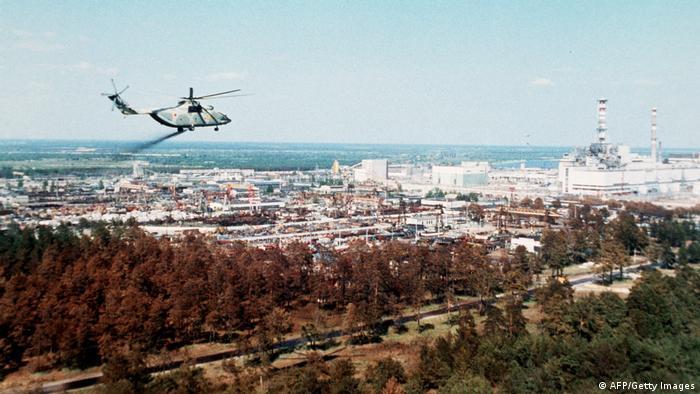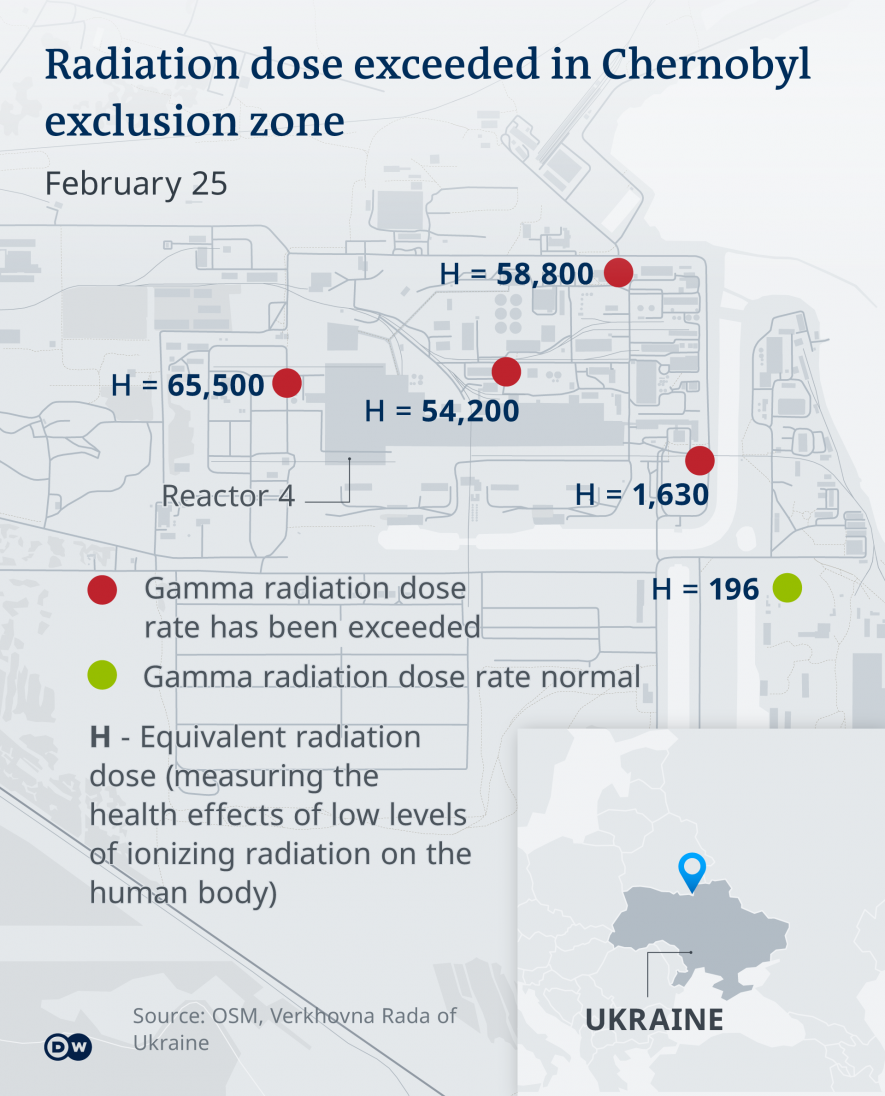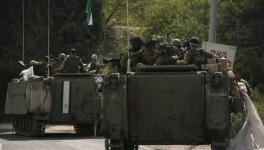Ukraine: The Risks of War in a Nuclear State

An army helicopter tries to help diffuse radiation during the 1986 Chernobyl nuclear disaster. Now the military could threaten a meltdown if nuclear plants are caught up in the Ukraine war.
When the Chernobyl nuclear site in Ukraine was captured by Russian forces last week, the Ukrainian Foreign Ministry warned of the possibility of "another ecological disaster."
Normal radiation levels in the Chernobyl Exclusion Zone — which includes four closed reactors, one of which melted down in 1986 and spread radioactive waste across Europe — were exceeded according to Ukraine's state nuclear regulator, reportedly because of military activity in the area.
But, beyond the Chernobyl plant, there are concerns that some of Ukraine's 15 active nuclear reactors could be caught in the crossfire.
"It is a unique situation in the history of nuclear power — in fact in history — that we have a situation where a nation is operating 15 nuclear reactors and is in the middle of a full-scale war," Shaun Burnie, nuclear specialist with Greenpeace East Asia, told DW. The plants provide about half of Ukraine's electricity, though right now only nine of the 15 reactors are operating, Burnie said.
"The idea of building in protection in the event of a full-scale war was never part of a nation's planning, at least in terms of commercial nuclear power," he added.

Though some Cold War-era reactors in the Soviet Union were built underground to ward off military threats, the "enormous facilities" in Ukraine were all built above ground, Burnie said.
"A nuclear power plant is one of the most complex and sensitive industrial installations, which require a very complex set of resources in ready state at all times to keep them safe. This cannot be guaranteed in a war," Burnie and Greenpeace East Asia colleague Jan Vande Putte wrote in a briefing to be released Wednesday on the vulnerability of nuclear plants during military conflict.
Disabled cooling systems could spark radiation leaks
Operating reactors are especially vulnerable in the event of a electricity grid shutdown during wartime. If a plant's power supply was incapacitated due to heavy bombardment in the region, this could disable reactor cooling — and the cooling of spent fuel storage that is is contained within relatively light walls.
In a worst-case scenario, this could lead to a Fukushima-like meltdown and "massive releases of radioactivity," Burnie said.
These anxieties are being fueled by increased military activity to the south of the Zaporizhzhia plant — one of the two largest plants in Europe, it has six reactors and a storage facility for high-level nuclear spent fuel. Armed conflict in the region of Zaporizhzhia "raises the specter of major risks," states the briefing.
The site is already vulnerable, the authors say, as some aging reactors were built and designed half a century ago in the 1970s. Roger Spautz, nuclear campaigner at Greenpeace France and Luxembourg says the original 40-year lifespan of these reactors has already been expanded — as is also the case in France.
"The biggest risk is that spent fuels are hit by a missile or can't be cooled due to the disabled energy system," Spautz said. "You need electricity running 24 hours a day," he said, noting that diesel backup generators may not be able to run for several weeks, which may be necessary in wartime.
There is an unlikely chance of a direct attack, Burnie said, but structures built for spent-fuel containment could be "destroyed accidentally" in the crossfire.
'Installations containing dangerous forces'
"Nuclear power plants are defined as 'installations containing dangerous forces' under international humanitarian law and should never be attacked," said Doug Weir, research and policy director of the UK-based Conflict and Environment Observatory, referring to the Geneva Convention.
Burnie believes that Russia, which has more than twice as many reactors as Ukraine, understands the consequences of a direct attack on these facilities — including nuclear contamination of Russia itself if winds blow in a westerly direction.
"We do not expect to see the deliberate targeting of sites like Zaporizhzhia, but the kinds of heavy weapons that Russia is deploying are not particularly precise," Weir said. "Fighting around such sites must be avoided at all costs."
On Monday, Petro Kotin, head of Ukraine's state-run nuclear power plant operator Energoatom, expressed concern to the the International Atomic Energy Agency about Russian columns of military equipment and artillery "moving in the immediate vicinity" of nuclear facilities.
Informing the IAEA of shelling near the Energoatom plants, Kotin said "highly undesirable threats across the planet" could be the consequence.
In response, he called on the IAEA to intervene and support a 30-kilometer (18-mile) nonconflict zone around the nuclear power plants.
Spautz said another concern was that the Russian military could capture a power plant and not have the staff required to properly manage it. "You need several hundred technical staff who know the plant," he said.
The Greenpeace briefing on the vulnerability of nuclear plants in Ukraine notes that staff will be needed in the event of flooding from the Dnieper river, which flows through the vicinity of the Zaporizhzhia plant.
Should the system of Dnieper dams and reservoirs that provide the cooling water for the Zaporizhzhia reactors be damaged and the supply of water limited, nuclear fuel could begin to overheat and release radiation.
"All these facilities need constant monitoring," Burnie said. "They are not passively safe."
Edited by: Tamsin Walker
Get the latest reports & analysis with people's perspective on Protests, movements & deep analytical videos, discussions of the current affairs in your Telegram app. Subscribe to NewsClick's Telegram channel & get Real-Time updates on stories, as they get published on our website.























